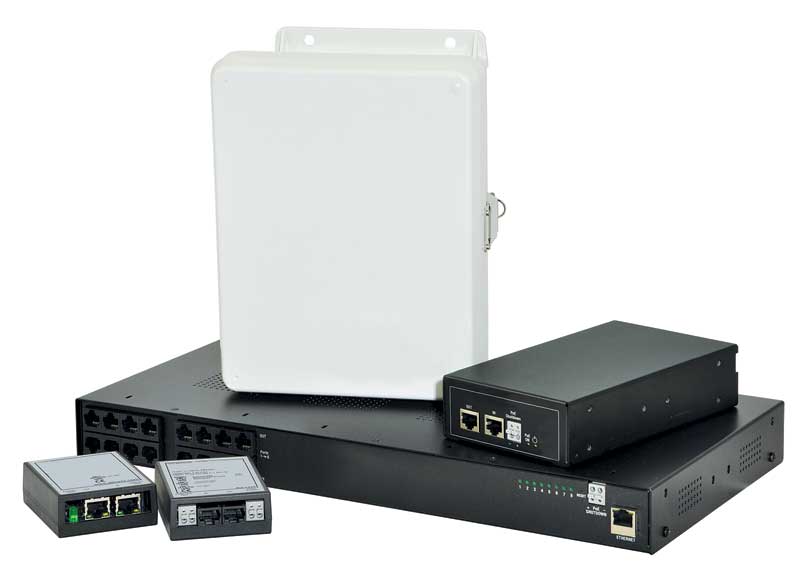Remaking Division 28: Specifying electronic safety and security with Masterformat 2016

Photo courtesy Altronix Corporation
Security detection, alarm, and monitoring
This area is where a significant consolidation of products occurs, built around intrusion and intrusion response. “Intrusion Detection” is the first major subcategory, segmented into building intrusion detection, area and perimeter intrusion detection, and intrusion detection interfaces. The second subcategory is “Security Monitoring and Control,” which preserves “Electronic Structural Monitoring Systems” and, importantly, adds:
- “Security Operations and Monitoring Center;”
- “Security Monitoring and Control Software;”
- “Security Monitoring and Control Services;”
- “Tracking Systems” (for assets and personnel); and
- “Audio Monitoring.”
Life safety
“Life Safety” incorporates the major classifications from the former “Electronic Detection and Alarm” category, and now encompasses “Environmental Sensors,” “Fire Detection and Alarm,” “Electronic Personal Protection,” and “Mass Notification.” It adds the new category of “Emergency Response Systems,” including “Computer-aided Dispatch.”
“Fire Detection and Alarm” has been subdivided into “Detection and Initiation,” “Fire Alarm,” and “Emergency Control Function Interfaces.” An important contribution of the working group (led by Ted Milburn of a power management/controls provider, Eaton Corporation), there was a move to more closely align categories and terminology with that issued by the National Fire Protection Association (NFPA), whose guidance is critical to fire system designers.
Specialized systems
This last top-level category provides for disparate items with their own unique characteristics.
Information Management and Presentation
The first category added, “Information Management and Presentation,” is a major one in today’s electronic security and life safety systems. A number of systems, called by various names, such as physical security information management (PSIM), command and control, and situational awareness, are used to aggregate and correlate information from diverse internal and external sources to provide a unified ‘state of affairs’ picture. Often, these prompt operators into action or automatically generate a response, such as keying a mass notification system.
The “Data and Information Management” section of the category is built around an extensive list of system interfaces. The other major sections are “Data Presentation” and “Control Room and Monitoring Equipment.”
Detention Security Systems
The second category, “Detention Security Systems,” eliminates most of the detention-related items in the former category of “Electronic Monitoring and Control,” focusing on interfaces to connected subsystems. It adds non-surveillance video sections for interrogation, arraignment, and visitation.
Other changes
Recommendations were made to add precast-concrete security bollards under Section 03 48 13 and manufactured metal security bollards under 32 39 13. Additional maintenance was performed in detention related items in Divisions 08 and 11.
Given the extent of the formal recommendations concerning the areas just discussed, inputs were provided in the change-matrix spreadsheet format. One of the challenges in assembling this tool was following the guidance provided by CSI to avoid assigning any suggested classification numbers.
This task is performed by CSI following acceptance of recommendations. Therefore, each item added, modified, or deleted was provided a Reference Number. If the item was new, the new levels and numbers were reflected to the extent possible—for example, 28 TBA TBA (i.e. To Be Assigned). Old level numbers (changed or deleted items) were specified. Items were marked as (1) No Change, (2) Add, (3) Modify, or (4) Delete. A description of the change, reason for change, and recommended Guidance Notes were provided. Further, a cross-reference to MasterFormat 2014 correlated each item in the old Division 28 with our corresponding Reference Number in the new breakdown.






